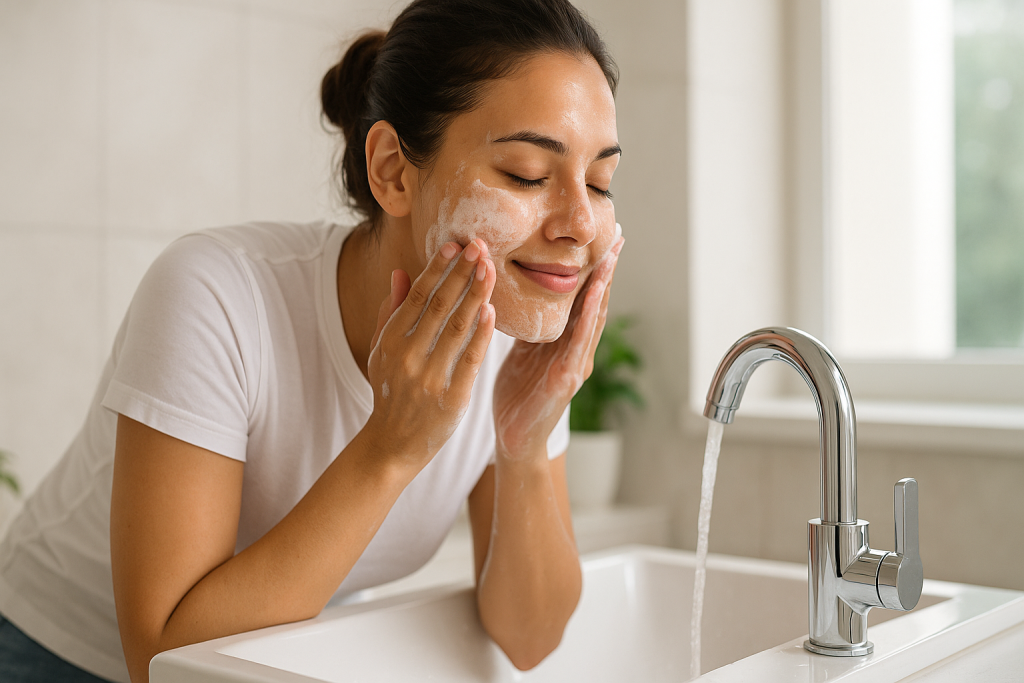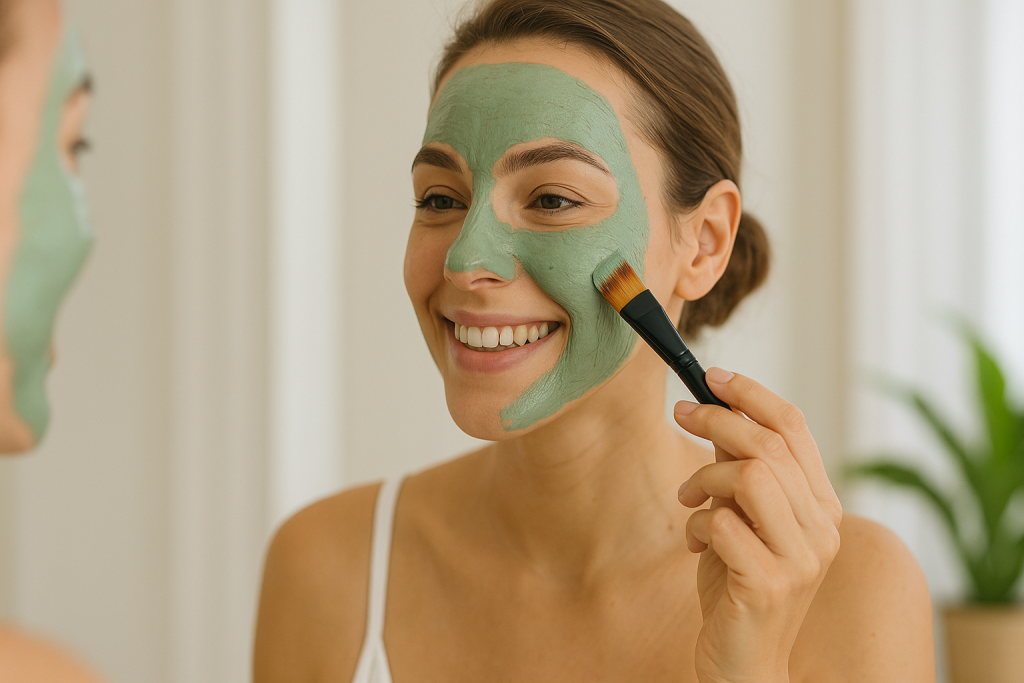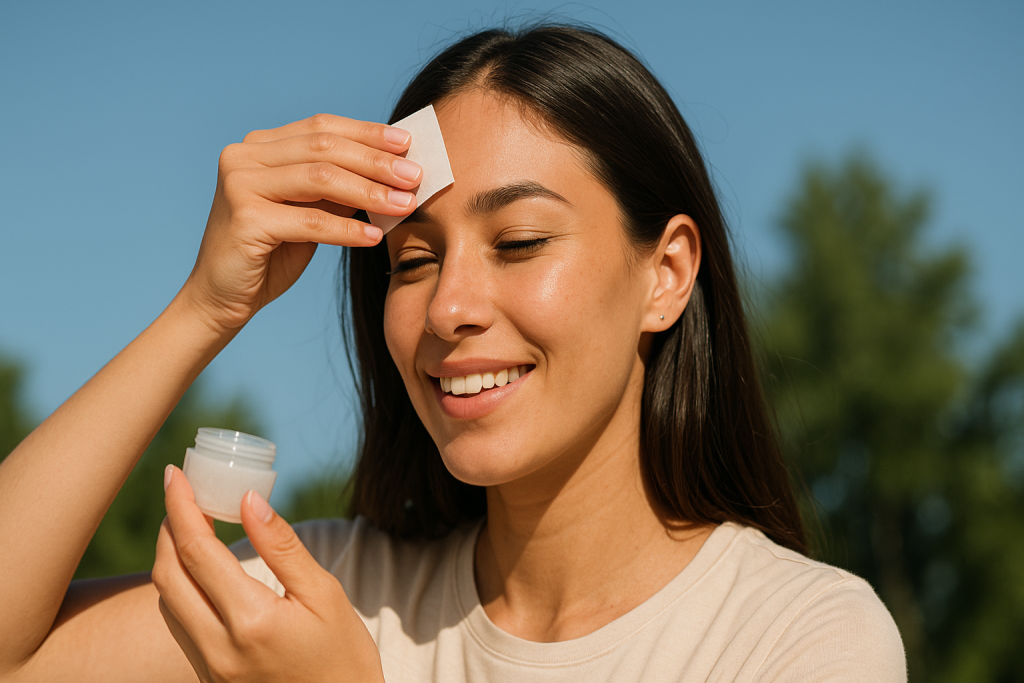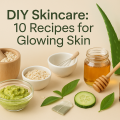Understanding Oily Skin: Causes and Challenges
Oily skin affects millions worldwide, often resulting in a shiny complexion, enlarged pores, and an increased risk of breakouts. The sebaceous glands produce excess sebum, leading to oil buildup on the surface of the skin. Genetics, hormonal fluctuations, diet, and environmental factors can all contribute to oily skin.
While some sebum is necessary for healthy skin, too much can trap dirt and dead skin cells, clog pores, and trigger acne. Individuals with oily faces often struggle to maintain a matte appearance throughout the day and may notice their makeup sliding off or fading quickly. Understanding what makes your skin oily is the first step to effective management.
Despite the challenges, oily skin has its advantages. People with oilier complexions often age more slowly, as oil provides natural moisture and protects against fine lines and wrinkles. However, a tailored skincare routine is essential to balance oil production without drying out the skin.
10 Proven Tips for Taking Care of an Oily Face
Adopting the right skincare habits and products can make a significant difference. Here are the ten most effective tips for keeping your oily face clear, healthy, and shine-free.
1. Use a Gentle, Foaming Cleanser
Cleansing is the foundation of any skincare routine for oily skin. Select a gentle, foaming cleanser that is specifically formulated for oily or acne-prone skin. Avoid harsh soaps or cleansers with high alcohol content, as they can strip your skin and trigger even more oil production.
Wash your face twice a day—morning and evening—to remove excess oil, dirt, and impurities. On particularly hot or humid days, consider a midday rinse if your skin feels greasy. However, avoid over-washing, as this can disrupt your skin’s natural barrier.

2. Incorporate an Oil-Free Moisturizer
Many people with oily skin make the mistake of skipping moisturizer. In reality, hydration is essential to keep the skin balanced. Choose a lightweight, oil-free, and non-comedogenic moisturizer to prevent clogged pores.
Gel-based moisturizers containing hyaluronic acid or glycerin provide hydration without adding heaviness. These ingredients lock in moisture while keeping skin feeling fresh and comfortable.
3. Exfoliate Regularly to Prevent Clogged Pores
Exfoliation helps remove dead skin cells and reduces the risk of clogged pores—one of the leading causes of blackheads and acne in oily skin. Use a mild exfoliant 2-3 times per week, opting for products containing salicylic acid or glycolic acid.
Be cautious not to over-exfoliate, as this can irritate the skin and cause increased oil production. Chemical exfoliants are generally safer than harsh physical scrubs, which can create microtears and worsen oiliness.
4. Apply a Clay Mask Weekly
Clay masks are a powerful tool for oily face care. Bentonite or kaolin clay absorbs excess oil, minimizes the appearance of pores, and leaves skin matte. Incorporate a clay mask into your routine once or twice a week for best results.
Apply the mask to clean skin, leave it on for 10-15 minutes, then rinse thoroughly. Avoid overuse, which can lead to dryness or irritation.

5. Choose the Right Sunscreen
Sun protection is non-negotiable, even for oily skin. Select an oil-free, non-comedogenic sunscreen with at least SPF 30. Gel formulations or mineral sunscreens with zinc oxide or titanium dioxide are ideal for oily or acne-prone skin types.
Apply sunscreen every morning as the final step of your skincare routine. Reapply every two hours when outdoors for continuous protection.
6. Use Blotting Papers for Quick Touch-Ups
Throughout the day, oil may build up, especially in the T-zone (forehead, nose, and chin). Blotting papers are a convenient solution to absorb excess oil without disrupting your makeup or irritating the skin.
Simply press a blotting sheet onto oily areas for a few seconds, then discard. This helps you maintain a fresh, matte look without over-washing or adding more products.

7. Avoid Heavy Makeup and Comedogenic Products
Thick, creamy foundations and concealers can clog pores and exacerbate oiliness. Choose lightweight, oil-free, and non-comedogenic makeup products to allow your skin to breathe. Mineral makeup is often a good choice for oily skin, as it contains fewer pore-clogging ingredients.
Always remove makeup thoroughly at the end of the day using a gentle cleanser or micellar water to prevent buildup and breakouts.
8. Maintain a Healthy Diet and Stay Hydrated
Diet can play a role in how oily your skin becomes. Limit your intake of greasy, fried foods and refined sugars, which can trigger inflammation and worsen oiliness and acne.
Instead, focus on a diet rich in fruits, vegetables, whole grains, and lean proteins. Healthy fats from sources like avocados, nuts, and fish help support balanced skin. Drink plenty of water throughout the day to keep your skin hydrated from the inside out.
9. Review and Adjust Your Skincare Routine Regularly
Your skin’s needs can change with seasons, age, and lifestyle. Periodically assess your skincare routine to ensure it’s still meeting your needs. Introduce new products gradually and monitor how your skin responds.
If you notice increased breakouts, irritation, or excessive dryness, scale back on active ingredients and consult a dermatologist for personalized advice. Sometimes, prescription treatments may be necessary for persistent oiliness or severe acne.
10. Practice Good Hygiene and Avoid Touching Your Face
It’s easy to transfer dirt, oil, and bacteria from your hands to your face, leading to clogged pores and breakouts. Make a conscious effort to avoid touching your face throughout the day, especially if your hands are not clean.
Regularly clean items that come into contact with your face, such as your phone, pillowcases, and makeup brushes. This helps reduce the risk of infection and maintains your skin’s overall health.
Best Skincare Ingredients for Oily Skin
Certain ingredients are especially effective for managing oily skin. Look for these key components in your products:
- Salicylic Acid: A beta hydroxy acid (BHA) that penetrates pores to dissolve excess oil and unclog them.
- Niacinamide: This vitamin B3 derivative helps regulate sebum production and minimizes the appearance of pores.
- Witch Hazel: A natural astringent that temporarily tightens skin and reduces oiliness.
- Retinol: Promotes cell turnover and helps keep pores clear but should be used with caution and under advice if you have sensitive skin.
When introducing new ingredients, do a patch test to avoid irritation or allergic reactions.
Lifestyle Changes for Long-Term Oil Control
While topical products are critical, lifestyle habits also have a significant impact on oil production. Incorporate these changes for more sustainable results:
- Manage stress: High stress levels can boost hormone production, which may increase oiliness and the likelihood of breakouts.
- Regular exercise: Physical activity improves blood flow and helps flush out toxins, supporting overall skin health.
- Get enough sleep: Aim for 7-9 hours per night to allow your skin time to repair and rejuvenate.
Making these adjustments, combined with a solid skincare routine, can significantly reduce excess oil and promote a clearer complexion.
When to See a Dermatologist
If your oily skin is unresponsive to over-the-counter solutions or is accompanied by severe acne, frequent irritation, or other signs of skin disorders, it’s time to consult a dermatologist. A professional can recommend prescription treatments, such as topical retinoids or oral medications, and help develop a personalized care plan.
Remember, every skin type is unique. What works for one person may not work for another, so finding the right balance is key to keeping your oily face healthy and clear.
Final Thoughts: Embrace Your Skin with Confidence
Managing oily skin doesn’t have to be overwhelming. By following these 10 essential tips and making smart choices in your daily routine, you can control shine, prevent breakouts, and enjoy a clearer, more radiant complexion. Embrace your skin type and take pride in the preventive steps you’re taking for lifelong skin health.


